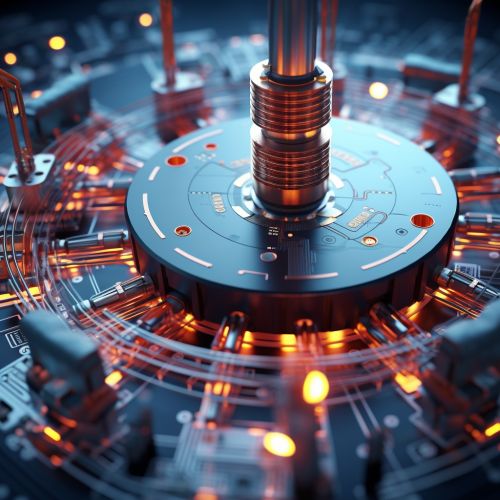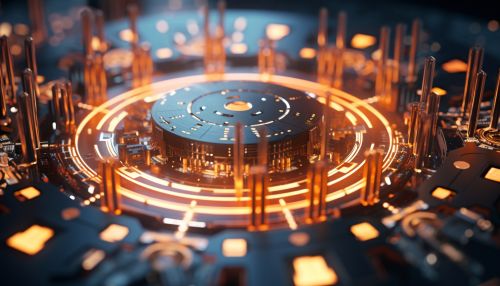Spintronic Devices
Introduction
Spintronic devices, also known as spin electronics, represent an innovative area of technology that exploits the intrinsic spin of the electron and its associated magnetic moment, in addition to its fundamental electronic charge, in solid-state devices. This field is a sub-branch of physics that merges the principles of magnetism with the technology of electronics.
Spintronics vs Electronics
Traditional electronic devices rely on the transport of electrical charge carriers - electrons - in a semiconductor such as silicon. Now, however, in the emerging field of spintronics, scientists are working to exploit the 'spin' of the electron rather than its charge. The spin of an electron is a form of angular momentum that, in the quantum world, takes on one of two values: 'up' or 'down', which can be used to represent the binary values '0' and '1'.
Fundamentals of Spintronics
The basic idea behind spintronics is to make use of the spin of an electron, rather than its charge, to transmit, process and store information. This can be achieved by creating devices that can generate, manipulate and detect spin-polarized currents. The spin of an electron is a quantum mechanical property and is associated with its magnetic moment, which means that it can interact with an external magnetic field.


Spin-Polarized Current
A spin-polarized current is a current that has more electrons with spin in one direction than in the other. In a normal current, the spins are randomly oriented and the current is said to be unpolarized. However, in a spin-polarized current, the spins are aligned and the current is said to be polarized. This polarization can be achieved by passing the current through a magnetic material, which aligns the spins in the direction of the magnetic field.
Spin-Transfer Torque
Spin-transfer torque (STT) is a phenomenon where the orientation of a magnetic layer in a spintronic device can be modified using a spin-polarized current. This effect is used in spin-transfer torque random access memory (STT-RAM), a type of non-volatile memory that uses spintronics.
Giant Magnetoresistance (GMR)
Giant magnetoresistance (GMR) is a quantum mechanical magnetoresistance effect observed in thin film structures composed of alternating ferromagnetic and non-magnetic layers. The 2007 Nobel Prize in Physics was awarded to Albert Fert and Peter Grünberg for the discovery of GMR. This discovery has played a major role in the development of spintronic devices.
Spintronic Devices and Applications
Spintronics has the potential to revolutionize the field of electronics by providing faster, smaller, and more energy-efficient electronic devices. Some of the potential applications of spintronics include:
- Magnetic Random Access Memory (MRAM): MRAM is a type of non-volatile memory that uses magnetic states to store information. Unlike conventional RAM, MRAM retains its information when the power is turned off. This makes it an attractive option for 'instant-on' computing and could potentially replace all forms of memory in the future.
- Spin Transistors: Spin transistors are a type of transistor that use the spin of an electron to carry information. They are still in the experimental stage, but if successful, they could lead to much smaller and faster electronic devices.
- Quantum Computing: Spintronics could also play a role in the development of quantum computers, which would be vastly more powerful than current computers. In a quantum computer, the spin of an electron could be used to represent a quantum bit, or qubit, which can be both a '0' and a '1' at the same time.
Future of Spintronics
The future of spintronics is very promising, with many exciting developments on the horizon. As our understanding of spintronics continues to grow, it is likely that we will see an increasing number of applications for this technology. However, there are still many challenges to overcome, such as the difficulty of generating and maintaining a spin-polarized current, and the need for materials that can support the transport of spin-polarized electrons.
